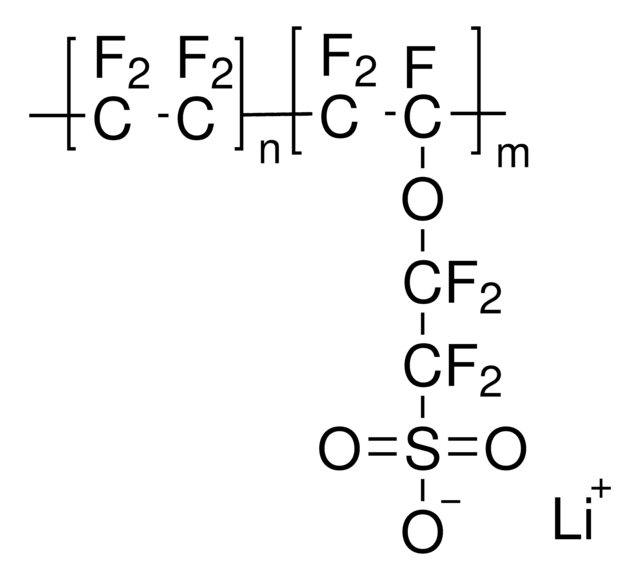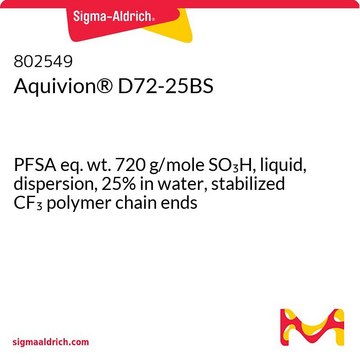推薦產品
形狀
membrane sheet
長度 × 寬度 × 厚度
18 cm × 18 cm × 150 μm
尋找類似的產品? 前往 產品比較指南
一般說明
Aquivion® PFSA ionomer membranes are melt-extruded films based on the short-side-chain (SSC) copolymer of Tetrafluoroethylene and the Sulfonyl Fluoride Vinyl Ether (SFVE) F2C=CF-O-(CF2)2-SO2F industrially produced by Solvay Specialty Polymers. Following a film hydrolysis the perfluoropolymer′s functional groups are operative in their sulfonic acid form, SO3H.
應用
Aquivion® PFSA membranes are used for electrochemical applications such as, but not limited to, polymer electrolyte fuel cells, electro-deionization systems, ozone generators, water electrolyzers, hydrogen separators and compressors, redox flow batteries as well as pervaporation or gas humidification systems.
包裝
Handling Note:
Membranes are packed and sealed in a barrier protection pouch inside a cardboard box to prevent damage or deterioration. It is recommendable storing the product in a clean, humidity-controlled environment protected from direct sunlight or other sources of irradiation or heat. Sheet dimensions are based on product conditioned at 23°C and about 50% relative humidity. They may slightly vary upon exposure to different ambient conditions. Maximum temperature rating is 230°C, overheating will result in polymer degradation, discoloration and release of toxic volatile decomposition products.
Membranes are packed and sealed in a barrier protection pouch inside a cardboard box to prevent damage or deterioration. It is recommendable storing the product in a clean, humidity-controlled environment protected from direct sunlight or other sources of irradiation or heat. Sheet dimensions are based on product conditioned at 23°C and about 50% relative humidity. They may slightly vary upon exposure to different ambient conditions. Maximum temperature rating is 230°C, overheating will result in polymer degradation, discoloration and release of toxic volatile decomposition products.
法律資訊
Aquivion is a registered trademark of Syensqo Group
儲存類別代碼
11 - Combustible Solids
水污染物質分類(WGK)
WGK 3
閃點(°F)
Not applicable
閃點(°C)
Not applicable
文章
Advances in the electrochemical conversion of water to and from hydrogen and oxygen have principally been achieved through the development of new materials and by understanding the mechanisms of the degradation of proton exchange membrane fuel cells (PEMFC) during operation.
Advances in the electrochemical conversion of water to and from hydrogen and oxygen have principally been achieved through the development of new materials and by understanding the mechanisms of the degradation of proton exchange membrane fuel cells (PEMFC) during operation.
我們的科學家團隊在所有研究領域都有豐富的經驗,包括生命科學、材料科學、化學合成、色譜、分析等.
聯絡技術服務



